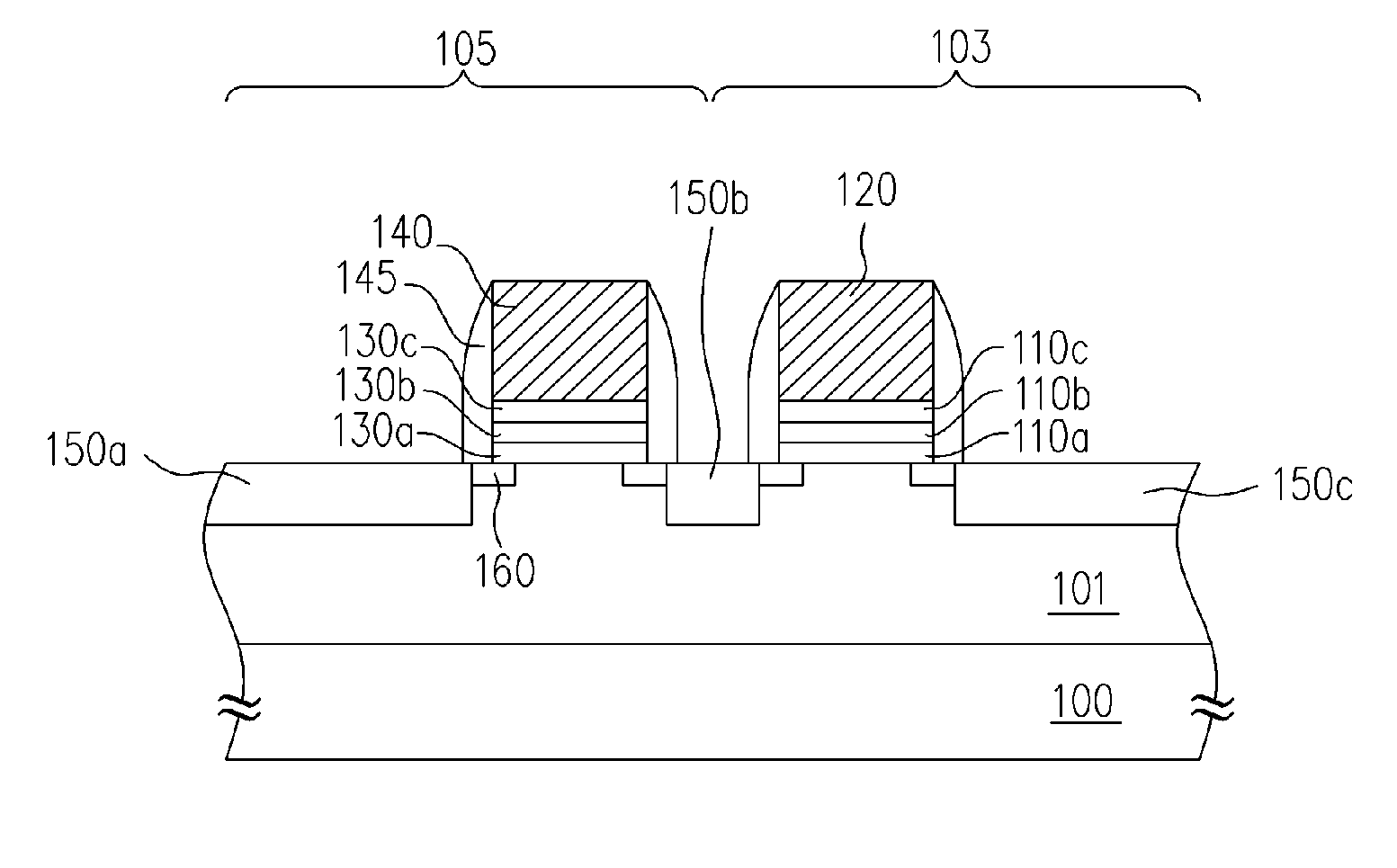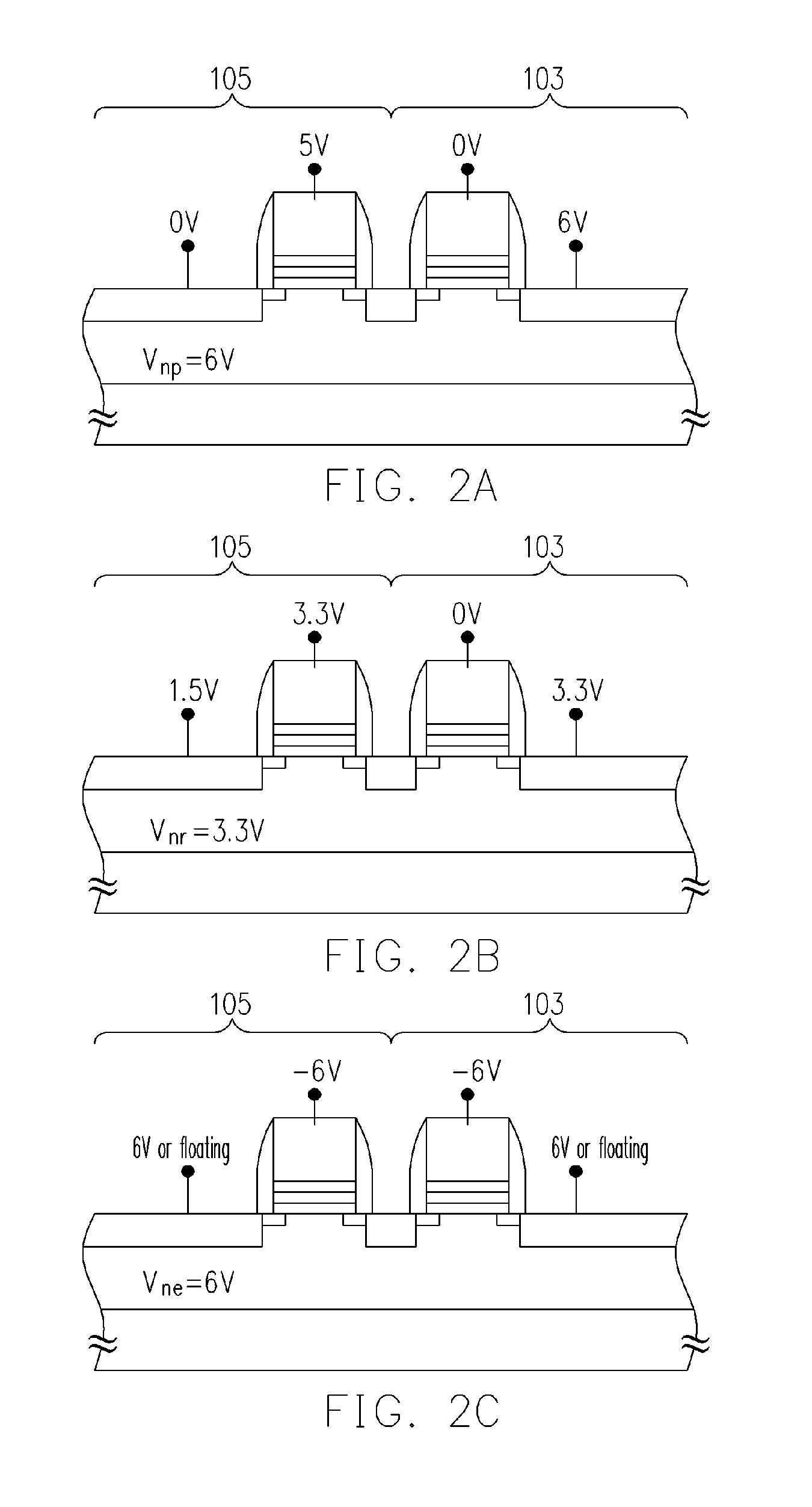P-channel non-volatile memory and operating method thereof
- Summary
- Abstract
- Description
- Claims
- Application Information
AI Technical Summary
Benefits of technology
Problems solved by technology
Method used
Image
Examples
Embodiment Construction
[0035] Reference will now be made in detail to the present preferred embodiments of the invention, examples of which are illustrated in the accompanying drawings. Wherever possible, the same reference numbers are used in the drawings and the description to refer to the same or like parts.
[0036]FIG. 1 is a schematic cross-sectional view of a P-channel non-volatile memory according to one embodiment of the present invention. As shown in FIG. 1, the P-channel non-volatile memory includes a substrate 100, a well 101, a first memory cell 103 and a second memory cell 105, for example. The substrate 100 is a P-type substrate, for example. The well 101 is an N-well disposed in the substrate, for example. The first memory cell 103 and the second memory cell 105 are disposed over the well 101 and are serially connected together, for example.
[0037] The first memory cell 103 includes a tunneling dielectric layer 110a, a charge storage structure 110b, a barrier dielectric layer 110c, a gate 12...
PUM
 Login to View More
Login to View More Abstract
Description
Claims
Application Information
 Login to View More
Login to View More - R&D
- Intellectual Property
- Life Sciences
- Materials
- Tech Scout
- Unparalleled Data Quality
- Higher Quality Content
- 60% Fewer Hallucinations
Browse by: Latest US Patents, China's latest patents, Technical Efficacy Thesaurus, Application Domain, Technology Topic, Popular Technical Reports.
© 2025 PatSnap. All rights reserved.Legal|Privacy policy|Modern Slavery Act Transparency Statement|Sitemap|About US| Contact US: help@patsnap.com



